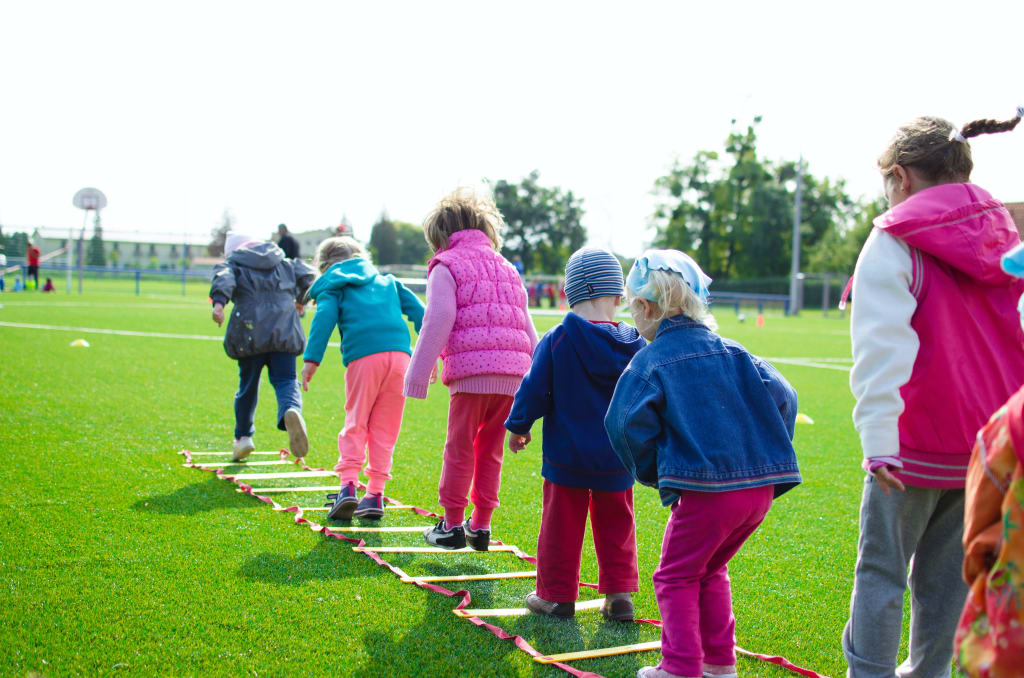From Blink To Blink: Unveiling The secrets To Life Long Healthy Eyes For Children
eye care

As a parent, all you want for your child is the very best life has to offer. This entails taking care of their general health, which includes protecting their priceless eyesight. Not only is having healthy eyes necessary for having excellent vision, but they also play an important part in the entire growth and development of your child. In this piece, we will delve into the mysteries behind how children can maintain healthy eyes throughout their entire lives. We will also provide you with helpful information, suggestions, and techniques for protecting your child’s vision.
The Importance of Healthy Eyes for Children
Healthy eyes are the windows to the world for children. From the moment they open their eyes in the morning until they close them at night, their eyes are constantly at work, exploring, learning, and absorbing information. Good vision is crucial for their cognitive development, academic performance, and social interactions.
Unfortunately, many eye problems can hinder a child’s visual health. It is estimated that one in four school-aged children has a diagnosed vision problem. These issues can have a profound impact on their learning abilities and overall well-being. That is why it is vital to prioritize and maintain healthy eyes for your child.
Common Eye Problems in Children
Understanding common eye problems in children is the first step toward proactive eye care. Some of the most prevalent issues include:
- Refractive Errors: Refractive errors, such as nearsightedness, farsightedness, and astigmatism, can cause blurred vision and difficulty focusing on objects. Regular eye exams can help detect and correct these problems early on.
- Lazy Eye: Also known as amblyopia, lazy eye occurs when one eye has significantly poorer vision than the other. It can result in reduced depth perception and may require corrective measures like eye patches or vision therapy.
- Strabismus: Strabismus, often referred to as crossed or misaligned eyes, can affect how the eyes work together. This condition requires early intervention to prevent complications and maintain binocular vision.
By being aware of these common eye problems, you can promptly address any concerns and seek professional help when necessary.
Tips for Maintaining Healthy Eyes in Children
Prevention is always better than cure, and the same holds true for your child’s eye health. Here are some practical tips to help you maintain healthy eyes for your little one:
- Encourage Outdoor Play: Spending time outdoors not only promotes physical activity but also exposes your child’s eyes to natural light and a variety of visual stimuli. This helps in the development of proper visual function.
- Ensure Adequate Lighting: Proper lighting is essential for reading, writing, and other visual tasks. Ensure that your child’s study area and playroom are well-lit to reduce eye strain.
- Establish Screen Time Guidelines: Excessive screen time can strain the eyes and contribute to digital eye strain. Set limits on the amount of time your child spends in front of screens and encourage regular breaks to rest their eyes.
- Promote Healthy Hygiene Habits: Teach your child the importance of handwashing and avoiding touching their eyes to prevent the spread of germs, which could lead to eye infections.
By implementing these tips in your child’s daily routine, you can lay the foundation for lifelong healthy eyes.
The Role of Nutrition in Promoting Eye Health
You are what you eat, and the same applies to your child’s eye health. Nutrition plays a vital role in promoting healthy eyesight and preventing various eye conditions. Here are some key nutrients that are essential for your child’s eye health:
- Vitamin A: Found in foods like carrots, spinach, and sweet potatoes, vitamin A is crucial for good vision and helps prevent night blindness.
- Omega-3 Fatty Acids: Found in fish, flaxseed, and walnuts, omega-3 fatty acids are known to reduce the risk of dry eyes and maintain overall eye health.
- Lutein and Zeaxanthin: These antioxidants, found in leafy greens, eggs, and citrus fruits, help protect the eyes from harmful ultraviolet (UV) rays and lower the risk of age-related macular degeneration.
- Pro Tip: Incorporate a variety of colorful fruits and vegetables into your child’s diet to ensure they receive a wide range of essential nutrients for their eye health.
The Impact of Screen Time on Children’s Eyes
In today’s digital age, children are exposed to screens more than ever before. While technological advancements have their benefits, excessive screen time can take a toll on your child’s eye health. Here’s how prolonged screen exposure can affect their eyes:
- Digital Eye Strain: Staring at screens for extended periods can cause eye fatigue, dryness, and discomfort. Encourage your child to take regular breaks and practice the 20-20-20 rule: every 20 minutes, look at something 20 feet away for 20 seconds.
- Myopia: Studies have shown a correlation between increased screen time and the development of nearsightedness in children. Limiting screen time and encouraging outdoor activities can help reduce the risk of myopia.
- Sleep Disruption: The blue light emitted by screens can disrupt your child’s sleep patterns. Establish a screen-free bedtime routine to ensure they get sufficient rest for healthy eye development.
By understanding the impact of screen time and implementing strategies to mitigate its negative effects, you can protect your child’s eyes in the digital era.
The Importance of Regular Eye Exams for Children
Regular eye exams are a crucial aspect of proactive eye care for children. Even if your child does not exhibit any signs of vision problems, routine eye exams can help detect and address any underlying issues before they escalate. Here’s why regular eye exams are essential:
- Early Detection: Many eye conditions, such as lazy eye or strabismus, can be effectively treated if caught early. Regular eye exams ensure early detection and timely intervention.
- Vision Correction: If your child requires glasses or contact lenses, regular eye exams help monitor their vision changes and ensure they have the most appropriate prescription.
- Eye Health Monitoring: Eye exams also involve assessing the overall health of your child’s eyes, including checking for signs of infection, inflammation, or other abnormalities.
- Remember to schedule your child’s first eye exam at around six months of age, followed by regular check-ups as recommended by your eye care professional.

Eye Exercises and Activities to Improve Vision in Children
Just like other muscles in the body, the eyes can benefit from exercises and activities that promote strength and flexibility. Here are some exercises you can incorporate into your child’s routine to improve their visual skills:
- Near-Far Focus: Have your child focus on an object up close, then shift their gaze to a distant object. Repeat this exercise several times to enhance their ability to switch focus between different distances.
- Tracking: Use a pen or finger and ask your child to follow its movement with their eyes, both horizontally and vertically. This exercise improves eye coordination and tracking skills.
- Visual Memory Games: Engage your child in memory games that require them to remember and recall visual information. This strengthens their visual memory and concentration abilities.
Remember to make these exercises fun and age-appropriate, turning them into enjoyable activities rather than tedious tasks.
Creating a Safe and Eye-Friendly Environment for Children
Your child’s surroundings can significantly impact their eye health. By creating a safe and eye-friendly environment, you can minimize potential hazards and optimize visual comfort. Here are some tips to consider:
- Childproof Your Home: Remove or secure any sharp objects or hazardous substances that may pose a risk to your child’s eyes. Ensure that furniture and fixtures are safely installed to prevent accidents.
- Proper Lighting: Opt for lighting fixtures that provide adequate illumination without causing glare or shadows. Natural light is ideal, so try to maximize sunlight exposure in your home.
- Protective Eyewear: Encourage your child to wear appropriate eye protection, such as goggles or safety glasses, when engaging in activities that could potentially cause eye injury, like sports or DIY projects.
By implementing these safety measures, you can create an environment where your child’s eyes can thrive.
Promoting Good Eye Hygiene in Children
Teaching your child good eye hygiene habits is an essential part of their eye care routine. By instilling these habits early on, you can empower them to take responsibility for their own eye health. Here are some eye hygiene practices to encourage:
- Regular Handwashing: Teach your child the importance of washing their hands frequently, especially before touching their eyes or applying eye drops.
- Avoid Rubbing Eyes: Discourage your child from rubbing their eyes vigorously, as this may introduce dirt, allergens, or harmful bacteria.
- Proper Contact Lens Care: If your child wears contact lenses, ensure they follow the recommended cleaning and storage instructions to prevent eye infections.
- Allergy Management: If your child suffers from allergies, work with their healthcare provider to develop an allergy management plan that includes eye care.
By incorporating these habits into their daily routine, your child can maintain good eye hygiene and reduce the risk of eye infections or other complications.
Conclusion: Empowering Parents to Protect Their Children’s Eye Health
As parents, it is our responsibility to prioritize and protect our children’s eye health. By understanding the importance of healthy eyes, recognizing common eye problems, and implementing proactive strategies, we can empower our children to enjoy lifelong visual wellness. From promoting outdoor play and proper nutrition to managing screen time and regular eye exams, each step we take contributes to their overall well-being. Let us join hands in safeguarding our children’s precious eyes, from blink to blink.
About the Creator
Abby blasius
I am a passionate content creator with a strong focus on health and wellness. While my educational background lies in a Bachelor of Accounting and Finance, it is my innate desire to help people feel good about themselves in mind, body&soul
Enjoyed the story? Support the Creator.
Subscribe for free to receive all their stories in your feed. You could also pledge your support or give them a one-off tip, letting them know you appreciate their work.






Comments
There are no comments for this story
Be the first to respond and start the conversation.